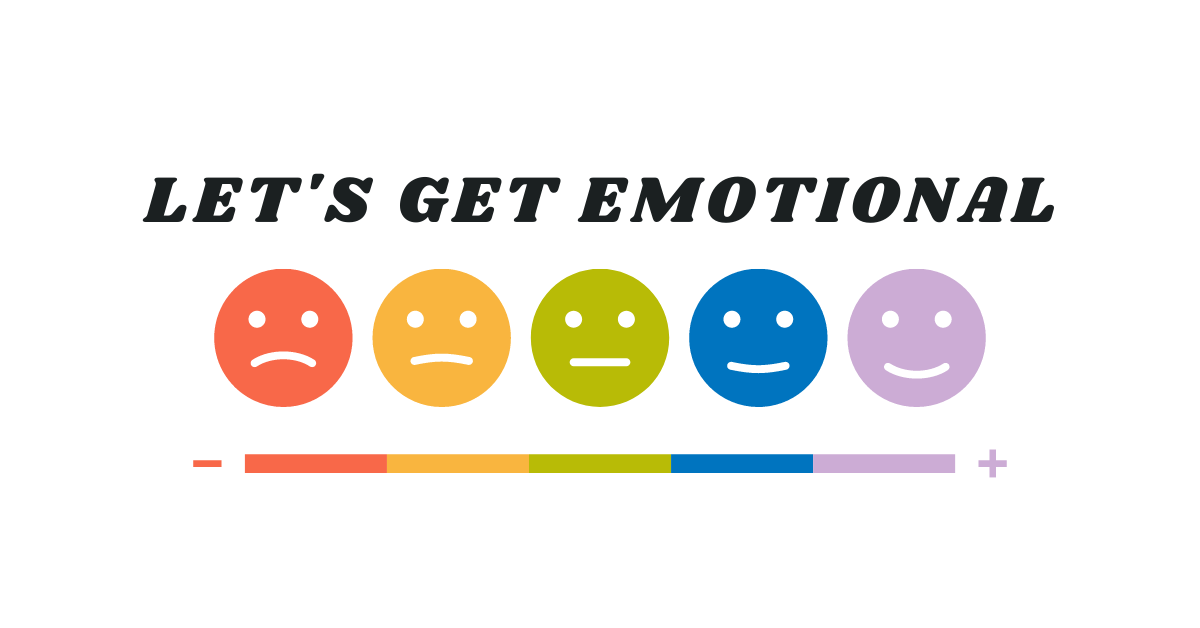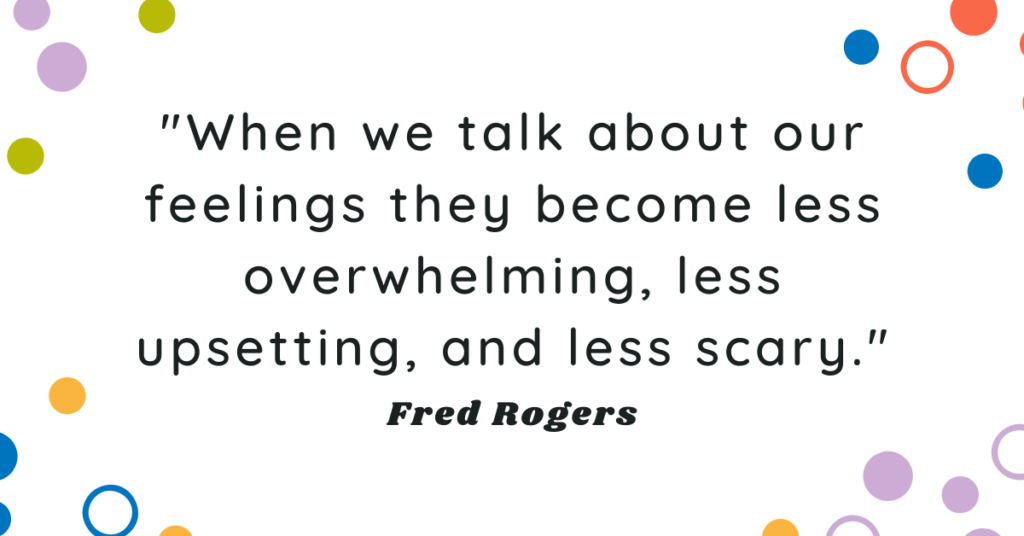
I consider myself a highly emotional person. In our society, this phrase is almost always used in a negative way. When did we decide that emotions, besides happiness, are a bad thing?
Emotions are Normal
Now we may not directly say that emotions are bad, but the way we talk about them can give that impression like:
- “Don’t be scared! There’s nothing to be afraid of.”
- “It’s not polite to be mad.”
- “Stop crying. Toughen up! Big kids don’t cry.”
When we say these phrases, they usually come from a good place. We want to offer comfort or support, but these phrases do the opposite. When we say them we are discrediting a person’s emotions. We know that there probably isn’t a monster under the bed, but the fear your child may feel is valid even if it’s irrational.
Anger is also healthy emotion! We just have to have it controlled. If we take our anger out on another person by hurting them with our words or actions, that’s when it’s not okay. To say that we should never feel angry or upset is unrealistic. The same thing goes with sadness. We shouldn’t let sadness control our lives, but we shouldn’t block it out completely either. If we get hurt or if we lose something that we love, it’s okay to feel sadness. Recognizing that all emotions are valid is a keystone in encouraging emotional health. So how can we encourage our children to express their emotions in healthy ways?
Encouraging Healthy Emotions
1.) Validate:
Validate Let that person know that what they are feeling is okay. Offer support for their feelings, rather than blame. Though it may seem irrational, or the behavior may be incorrect, they are still experiencing these strong emotions. Try these phrases the next time your child experiences big emotions:
- “I can see that you’re upset, and that’s okay.”
- “You’re feeling scared. I’m here with you.”
- “I’m sorry that you are feeling sad. Do you want to talk about it?”
- “It’s okay to feel angry.”
2.) Guide:
Provide assistance or tools that your child can use to help regulate. Do they have a place where they can go to cool off? Would a brief walk be possible? Even stress balls can help a child cool off. When I was working in after-school programs, providing a piece of scrap paper to be torn up could help kids burn off steam.
- EX: If someone is crying uncontrollably, give them a glass of water. They will have to breathe in order to drink, helping them gain control. Breathing exercises work well for all emotions, including excess joy!
3.) Explain:
Most of the time, children just know they’re feeling something, but they don’t always know why. When we can break it down for them, things become less overwhelming and easier to manage. I had a student who would always get very frustrated and upset near the end of the day. They never knew the reason why, until we sat down and figured something out; they were hungry. This child was going 4-5 hours without a snack, and that was making them feel irritable. I explained the all too relatable feeling of “Hangry” and it made things much easier. When that child would start feeling “hangry” they would ask for a snack. There was a huge improvement in their behavior. That’s not to say that it worked instantly, but we at least found our start.

Emotions are a complex thing for kids and adults. Sometimes we just need a moment to be sad or upset. A good sense of fear can be just as healthy as a good laugh! If you haven’t already, I challenge you to watch Inside Out. It’s a perfect movie to help children understand and visualize their emotions. Even after seeing it 10+ times, I still find myself crying… and that’s okay! ◡̈
